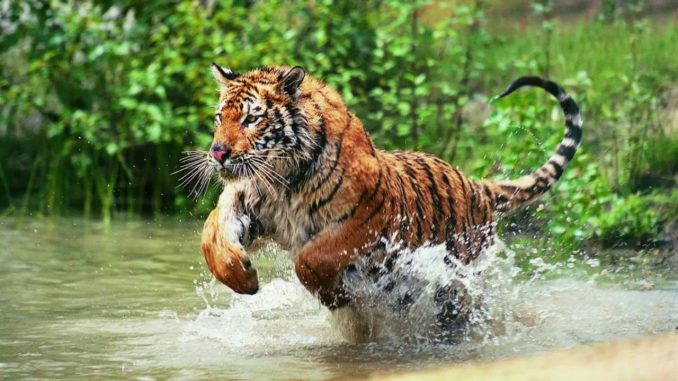
Two rescued cats in an Arunachal zoo intrigue experts
Two tigers with features distinct from the well-known Royal Bengal variety have led to research interest on whether India hosts more than one sub-species of the big cat.
Rescued as orphans, Ipra and Chipi were eight months old when they were found near Anini in Arunachal Pradesh’s Upper Dibang Valley district, bordering China, in December 2012. They were shifted to the State capital Itanagar’s Biological Park almost a year later from Roing, headquarters of an adjoining district at 7,000 ft above sea level.
Ipra the male, and Chipi the female had two other siblings, but one died of pneumonia and the other was presumed killed like their mother.
Missing white patch
The two survivors have grown to be bigger, more aggressive and endowed with a coat shade different from the Royal Bengal tigers (RBTs) in the park. Officials say the Anini tigers do not have a white patch behind their ears like the Bengal tigers. “The tigers from Anini are five-and-a-half years old, but they are markedly larger than the captive-bred Bengal tigers that are older than them. They also appear morphologically different [in form] from Bengal tigers and have a different colour coating,” the Park’s curator Raya Flago told The Hindu.
Genetic test
“We sent blood and hair samples to the Laboratory for the Conservation of Endangered Species of the Centre for Cellular and Molecular Biology(LaCONES) in Hyderabad for a genetic test two years ago. But we are yet to get the report,” Mr. Flago said.
Arunachal Pradesh’s Chief Wildlife Warden Ruselo Kemp said the department would push LaCONES for the test report. “Until we get it, we cannot say the Anini tigers are different though they appear so to trained eyes,” he said.
Kamal Azad of the National Tiger Conservation Authority (NTCA) said experts had marked the “non-Royal Bengal-like” appearance of the Anini tigers and explored the scope for a study with the Wildlife Institute of India (WII).
Forest officials in Arunachal Pradesh said the only tiger sub-species bigger than the Royal Bengal (Panthera tigris tigris) is the Siberian or Amurtiger(Panthera tigris altaica). An adult Royal Bengal male grows up to 3.1 metres from head to tail while the Siberian reaches 3.3 metres.
“Siberia is far off and the only species that comes geographically close to the Royal Bengal is the Indo-Chinese or Corbett’s tiger (Panthera tigriscorbetti), which is found in Laos, Cambodia and Thailand,” Mr. Flago said.
The RBTs found in Bangladesh, Bhutan and Nepal besides India are also known to range across Myanmar.
Yadvendradev V. Jhala, WII’s large carnivore expert, said the reported size of the Anini tigers does not match that of the Indo-Chinese that are smaller than the Royal Bengal. “The physical features of the two tigers at Itanagar zoo officials make them worthy of a study.” he said in Dehradun.
Highest tiger territory
The Anini tigers were rescued from Angrim village on the edge of the 4,149 sq. km Dibang Wildlife Sanctuary, which is at an altitude of 3,200 metres. The NTCA has proposed to make this sanctuary a tiger reserve because of a “sizeable population” of the animals.
If so designated, the sanctuary, established in 1992, will be India’s highest tiger reserve. Bhutan is the only country as of now to record the presence of tigers at 4,100 metres.
But Arunachal Pradesh’s Forest Department is facing resistance from the local people besides running low on manpower for managing the proposed tiger reserve.
“The sanctuary is too vast, taking up almost half of Upper Dibang Valley district’s area (9,129 sq km) and encompassing many villages. We have only five staff from social forestry division managing the sanctuary,” Mr. Kemp pointed out.
During his visit to the area in January, the local people told Mr. Kemp that they fear their rights would be curbed if the sanctuary is upgraded to a tiger reserve. Officials said some villagers in the district hunt for food, though there have been no reports of conflict with tigers.
Wildlife experts feel the case for a tiger reserve could be stronger if the “peculiarity” of the Anini tigers is genetically established.
Source: The Hindu


Leave a Reply